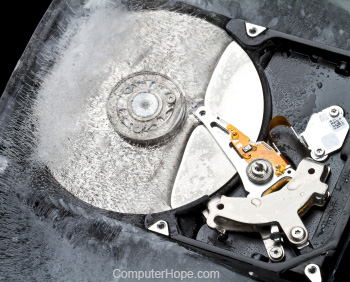Because of the wide variety of computer and BIOS
manufacturers over the evolution of computers, there are numerous ways
to enter the BIOS or CMOS Setup. Below is a listing of most of these
methods, as well as other recommendations for entering the BIOS setup.
Note: This document does not help if
you cannot enter the BIOS or CMOS setup because of a password.
New computers
Computers manufactured in the last few years allow you to enter the
BIOS setup using one of the five keys shown below during the boot process. Typically it is one of the first three keys.
- F1
- F2
- DEL
- ESC
- F10 *
* F10 is also used for the boot menu. If F10 opens a boot menu, your setup key is likely F2.
You
will know when to press this key when you see a message similar to
the example below as the computer is booting. Some older computers may
also display a flashing block to indicate when to press the F1 or F2
keys.
Press <F2> to enter BIOS setup
Tip: If
your computer is a new computer and you are unsure of what key to press
when the computer is booting, try pressing and holding one or more keys
on the keyboard to cause a stuck key error. Once you get this error,
you should have the option to continue or enter setup.
Once you have successfully entered the CMOS setup, you should see a screen similar to the example below.
How do I change and save changes in CMOS setup?
Once in CMOS setup, the method for changing the settings often depends on the
BIOS manufacturer. Typically you can change the settings by using the arrow keys
to move to the option you want to change. Press Enter to select what
to change and then use the arrow keys to select a new value.
Some manufacturers may have you press the Page up and Page down keys to change the values.
Tip: All manufacturers list the steps on how to navigate
on the bottom or right-hand side of the screen.
I cannot change the values to a setting I want to use.
If you are trying to change the clock settings, speed
settings, or other setting and do not have an available option, it is
because it is not supported by the motherboard. If you believe it should be supported, you may need a BIOS update.
Older computers
Unlike the computers of today, older computers (before 1995)
had numerous different methods of entering the BIOS setup. Below is a
listing of key sequences to press as the computer is booting to enter
setup.
- CTRL + ALT + ESC
- CTRL + ALT + INS
- CTRL + ALT + ENTER
- CTRL + ALT + S
- PAGE UP KEY
- PAGE DOWN KEY
ACER BIOS
If
your computer cannot boot or you want to restore the BIOS back to its
bootable settings and your computer uses an ACER BIOS, press and hold
the F10 key as you turn on the computer. While continuing to hold the
F10 key, you should hear two beeps indicating that the settings are
restored.
AMI BIOS
Older AMI BIOS could be restored back to bootable settings by pressing and holding the Insert key as the computer is booting.
BIOS or CMOS diskettes
Early 486, 386, and 286
computers required a floppy disk in order to enter the BIOS setup.
These diskettes may be referred to as ICU, BBU, or SCU disks. Because
these diskettes are unique to your computer manufacturer, you must
obtain the diskettes from them. See the computer manufacturers list for contact information.
Early IBM computers
Some early IBM computers require you to press and hold both mouse buttons as the computer boots to enter the BIOS setup.
Other suggestions
Finally, if none of the above suggestions help get you
into your CMOS setup, you can cause a stuck key error, which causes the
CMOS setup prompt to appear and remain until you press a key to
continue. To do this, press and hold any key on the keyboard and do not
let go (you may get several beeps as you are doing this). Keep pressing
the key until the computer stops booting and you have the option to
enter setup.









